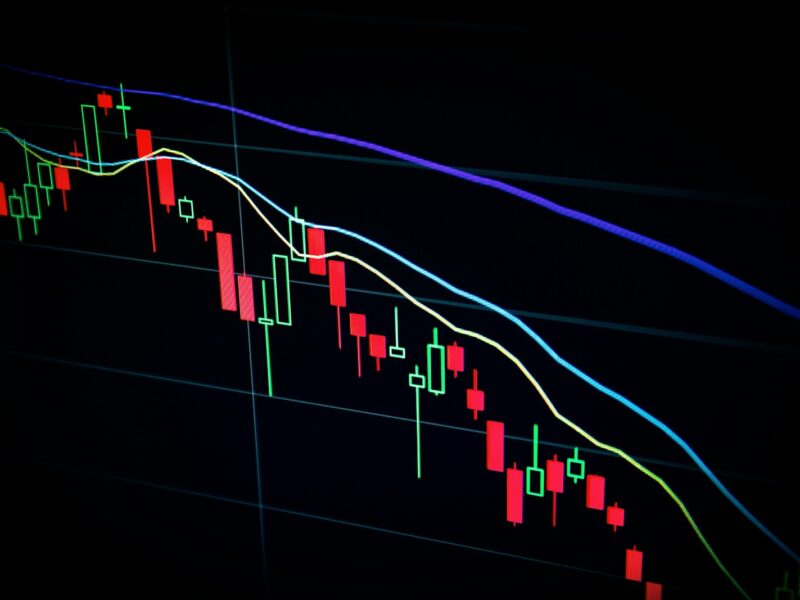In short, investors make money by buying stocks which increase in value over time. However, not everyone agrees on how to reliably pick stocks which will grow.
In fact, many people believe it’s impossible: the efficient market hypothesis claims that all relevant public information is already reflected in a stock’s price, and investors only profit due to market growth as a whole – most people won’t “beat the market” by choosing stocks.
However, value investing, pioneered by Benjamin Graham, offers a direct challenge to the efficient market hypothesis. We take a look at some of the best value investing books that will help enhance your investing skills.
What is Value Based Investing?
Value based investors believe that while stock prices do reflect the true value of the underlying stock, certain market factors and investor irrationality can mean that stocks are mis-priced in the short term.
If you subscribe to this strategy, you believe that the market overreacts to external stimuli and stock price swings are larger than the actual underlying change in value. In other words, stock price movement doesn’t always perfectly match the intrinsic value of the underlying stock.
Unlike speculating or gambling investors, value-based investors buy stocks based on their current value, not their potential future value, hoping that other people will recognize this same intrinsic value and cause a price increase. The goal, then, is to buy stocks which are (briefly) selling for less than they are currently worth.
How Does Value Investing Work?
Value investors use a variety of techniques to estimate intrinsic value; this might include fundamental analysis and/or studying broad market factors and other behavioral and financial indicators.
Since this is a subjective process, two value-investors might come to different conclusions about an investing opportunity. There are many different indicators and strategies to use. Sifting through this information and creating an investing strategy with a margin of safety and strong possibility of success can be daunting.
Reading expert analyses and how-to’s from established and successful value investors is a great way to get background information on the field, learn new strategies, and ultimately help you improve your returns.
Deep Value: Why Activist Investors & Contrarians Battle for Control of Losing Companies
One of the tenants of value investing is looking for merit in unloved and unwanted companies. Deep value investing takes that premise one step further by giving you first hand perspective into the strategies some of the savviest investors utilize to invest in some of the most out of favor companies currently trading in the market. You need to develop a little bit of an iron stomach and should be willing to embrace taking contrarian positions of the “experts” on TV, but the rewards can be great in this niche.
Tobias Carlisle takes you into the world of deep value investing from the point of view of a trained lawyer that worked his way through an activist hedge fund and ultimately opened his own fund. This book is an ideal resource for new investors as well as more seasoned investors looking for a new investing edge. The author takes you through the early days of value investing driven by Benjamin Graham and adds modern valuation and statistical techniques for a modern market environment.
If you have the patience and the willingness to really dig into the underlying business fundamentals, this book offers practical strategies to identify potential opportunities in the market.
Value Investing: from Graham to Buffet and Beyond
Greenwald’s book is much more practical; Value Investing gets right into the mechanical details of analysis. It’s a great resource for those familiar with trading philosophy and strategy wanting detailed information on analysis. You’ll need basic knowledge of terminology and tools to get the most out of this book.
Greenwald, a graduate professor at Columbia University, bills himself as a “guru to Wall Street gurus,” and aims his trainings on fundamental value investing at this audience.
The book includes a number of interesting and valuable case studies which show the principles described in the book in action. He also includes differing perspectives on investing and suggests avenues for readers to construct their own trading approaches and find more information.
Like many of the other texts which came out before the internet, however, this book (published in 2004) can feel a bit dated. The calculation methods described have actually gotten much simpler with the advent of accessible computing. It’s now more of a historical account of how investors used to approach analysis.
If you want a practical guide to understanding how Warren Buffett and other famous investors have approached the market, though, this is a great text to pick up.
The Value Investors: Lessons from the World’s Top Fund Managers
This book takes a slightly different approach; instead of offering a walk-through of the author’s strategy, Chan interviews 12 different value-investors from all over the world, discussing their personal strategies, mindset, and backgrounds.
His list includes value investors from vastly different nationalities, cultural backgrounds, and ages; he interviews them all to understand how they all came to advocate for value investing. The inclusion of investors from European and Asian markets adds an important element of different perspective.
The resulting book is a fun and engaging read. It’s exciting and inspirational, but perhaps not as immediately practical as other books on the list. Chan focuses on investing philosophy and thought process rather than quantitative or mechanical tools for investing.
However, mindset is still a hugely influential aspect of successful investing, and the insight of all the people interviewed is more than worth the price of the book for both beginners and advanced investors.
Active Value Investing: Making Money in Range-Bound Markets
Katsenelson focuses on specific, historicized market conditions. In the author’s words, “Investors expecting the average returns observed over the past century are likely to be disappointed, as average happens a lot less frequently than we’ve been told.”
Where most investing advice focuses on what to do during periods of growth and retraction, Active Value Investing focuses on how to profit during times in which the market isn’t moving at all.
He calls these “range bound” markets; this book is a value-based investment strategy intended to provide guidance on how to modify value-investing strategies to work during range-bound markets. The author is a portfolio manager and CFA; his approach is fairly simplified and accessible, but includes enough information to be of interest to those more experienced (though his language can read as dumbed-down at times).
Much of the book is dedicated to historical descriptions of market behavior, combining financial and historical analysis. The market analysis section is comprehensive and provides a compelling case for why value-investing works in all market conditions. He also includes various helpful advice on applying his strategy.
He believes the U.S. market is entering a period of extreme volatility with long term sideways movement until 2020. He argues that only those who see this trend and adjust their strategies will have captured meaningful profit after this time.
Since this is the main conclusion of the book, it can feel simplistic, dumbed-down, or shallow, particularly on the initial read. Parts also look poorly edited, with some grammatical issues and typos.
However, the examples also provide one of the most straight-forward and useful methods of measuring businesses’ value. It’s a usefully unique book, but still accessible to anyone with basic investing knowledge. Unlike other methods which work best in bull markets, he provides a refreshing and consistent market theory.
Closing Thoughts
Value investing is the first choice of so many finance professionals for a reason; it’s one of the most consistent methods of generating a profit from investing.
However, your value-investing strategy is only as good as your a) mindset, b) strategy, and c) analysis skills. While reading a single book isn’t a silver bullet, the texts on this list are a relatively quick and easy way to jump into the field.
By reading them in combination, you can gain instant access to expert experience and advice, quantitative analysis skills, and a solid and deep background in value-based investing.


